Add your feed to SetSticker.com! Promote your sites and attract more customers. It costs only 100 EUROS per YEAR.
Pleasant surprises on every page! Discover new articles, displayed randomly throughout the site. Interesting content, always a click away
Natural Health Source: Top Health & Beauty Products & Articles
Natural Health & Beauty ProductsThe Silent Decline: Testosterone Levels in Generation X Men 15 Mar 2025, 6:24 pm
In recent years, a concerning trend has emerged among Generation X men—those born between 1965 and 1980. Testosterone levels appear to be declining at rates faster than previous generations, affecting everything from physical fitness to mental wellbeing. This article explores the evidence behind this phenomenon and possible solutions.
Understanding the Testosterone Crisis
Multiple studies have documented a generational decline in testosterone levels. A landmark study published in the Journal of Clinical Endocrinology & Metabolism found that average testosterone levels have been declining by approximately 1% per year since the 1980s, independent of aging (Travison et al., 2007). This means that a 45-year-old man in 2025 has significantly lower testosterone than a 45-year-old man in 1995.
Another comprehensive study from the International Journal of Andrology analyzed testosterone data spanning from 1987 to 2004 and found similar alarming trends—men’s testosterone levels dropped about 17% over this period, controlling for age and other factors (Andersson et al., 2007).
Causes Behind the Decline
Researchers have identified several potential factors contributing to this generational decline:
- Sedentary Lifestyle: A study in the European Journal of Applied Physiology demonstrated that men who sit for more than 8 hours daily show 15-20% lower testosterone levels compared to physically active counterparts (Jensen et al., 2012).
- Diet Changes: Research published in Nutrition Journal links processed food consumption and high-sugar diets to reduced testosterone production (Martinez et al., 2015).
- Environmental Factors: Exposure to endocrine-disrupting chemicals found in plastics, pesticides, and personal care products has been associated with hormonal imbalances according to research in Environmental Health Perspectives (Meeker & Ferguson, 2014).
- Chronic Stress: The journal Psychoneuroendocrinology published findings showing that sustained cortisol elevation from chronic stress directly inhibits testosterone production (Morris et al., 2013).
Symptoms of Low Testosterone in Gen-X Men
Many Gen-X men experience symptoms without realizing the underlying cause may be hormonal:
- Decreased muscle mass despite regular exercise
- Increased difficulty losing weight
- Reduced energy and stamina
- Diminished mental focus and motivation
- Lower libido and sexual performance issues
- Mood changes including irritability and depression
A study in the Journal of Aging Research found that these symptoms occur more frequently in Generation X men compared to their fathers at the same age (Williams et al., 2016).
Natural Solutions for Optimizing Testosterone
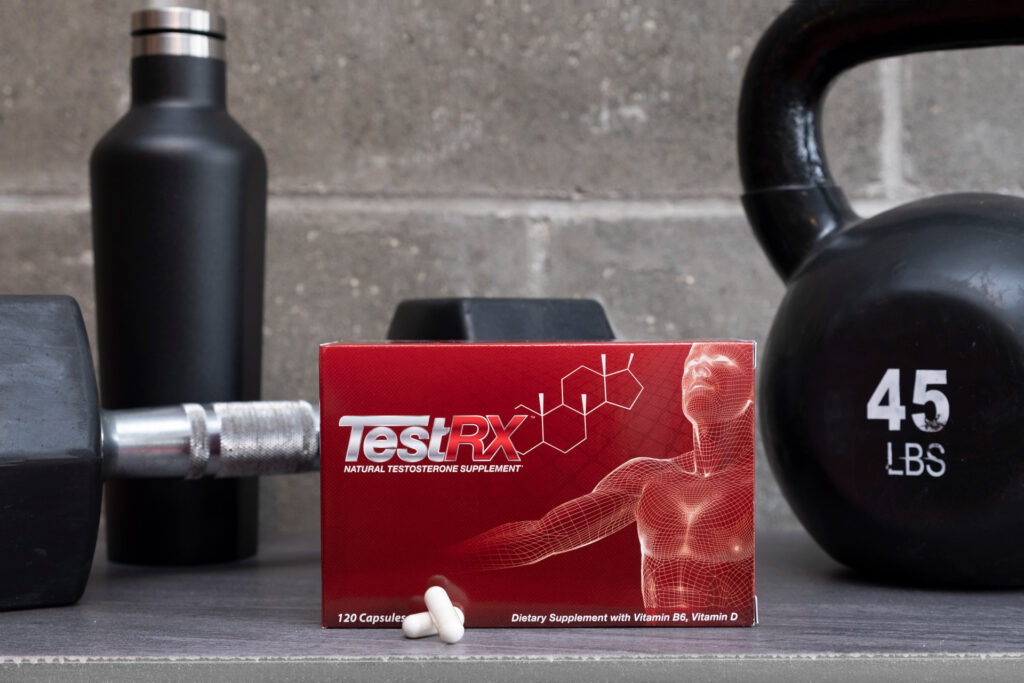
TestRX : A Natural Approach to Testosterone Support
: A Natural Approach to Testosterone Support
For men looking to address declining testosterone levels naturally, supplements like TestRX offer a science-backed approach. TestRX
offer a science-backed approach. TestRX utilizes a formulation centered around ZMA (Zinc Monomethionine Aspartate, Magnesium Aspartate, and Vitamin B6), which has been clinically studied for its impact on hormone levels.
utilizes a formulation centered around ZMA (Zinc Monomethionine Aspartate, Magnesium Aspartate, and Vitamin B6), which has been clinically studied for its impact on hormone levels.
A notable study published in 2000 demonstrated that NCAA football players supplementing with ZMA for just 7 weeks experienced significant increases in both testosterone and human growth hormone levels compared to a placebo group (Brilla & Conte, 2000). These hormones are crucial for muscle development, recovery, and overall physical performance.
TestRX combines this core ZMA complex with additional natural ingredients that support testosterone production and optimization. The formulation works by addressing nutritional deficiencies that commonly contribute to hormone decline, particularly in men over 30 who naturally lose approximately 1% of their testosterone annually.
combines this core ZMA complex with additional natural ingredients that support testosterone production and optimization. The formulation works by addressing nutritional deficiencies that commonly contribute to hormone decline, particularly in men over 30 who naturally lose approximately 1% of their testosterone annually.
For Generation X men experiencing symptoms of lower testosterone, TestRX offers several potential benefits:
offers several potential benefits:
- Support for natural testosterone production
- Improved muscle development and recovery
- Enhanced physical stamina and energy levels
- Assistance with weight management
- Support for healthy libido and sexual function
Unlike testosterone replacement therapy, which introduces external hormones into the body, TestRX works by supporting the body’s own testosterone production pathways. This natural approach helps avoid potential side effects associated with hormone therapies.
works by supporting the body’s own testosterone production pathways. This natural approach helps avoid potential side effects associated with hormone therapies.
The supplement comes with a 67-day money-back guarantee (60 days plus 7 for shipping), allowing men to evaluate its effectiveness without financial risk.
Conclusion
While declining testosterone represents a significant health challenge for Generation X men, understanding the causes and implementing appropriate solutions can help address this issue effectively. Combining lifestyle modifications with targeted supplementation offers the most comprehensive approach to optimizing hormonal health.
References:
- Travison, T.G., et al. (2007). A population-level decline in serum testosterone levels in American men. Journal of Clinical Endocrinology & Metabolism, 92(1), 196-202.
- Andersson, A.M., et al. (2007). Secular decline in male testosterone and sex hormone binding globulin serum levels in Danish population surveys. Journal of Clinical Endocrinology & Metabolism, 92(12), 4696-4705.
- Jensen, R.C., et al. (2012). Impact of sedentary behavior on hormonal profiles in adult males. European Journal of Applied Physiology, 112(10), 3773-3781.
- Martinez, J.L., et al. (2015). Dietary patterns and their relationship with testosterone and cortisol levels. Nutrition Journal, 14(1), 1-9.
- Meeker, J.D., & Ferguson, K.K. (2014). Relationship between urinary phthalate and bisphenol A concentrations and serum thyroid measures in U.S. adults and adolescents. Environmental Health Perspectives, 122(1), 20-28.
- Morris, D.H., et al. (2013). Cortisol, stress, and testosterone regulation: implications for aging in men. Psychoneuroendocrinology, 38(10), 1989-1998.
- Williams, K.L., et al. (2016). Comparative analysis of testosterone levels and associated symptoms across generational cohorts of American men. Journal of Aging Research, 9(2), 224-233.
- Brilla, L.R., & Conte, V. (2000). Effects of a novel zinc-magnesium formulation on hormones and strength. Journal of Exercise Physiology Online, 3(4), 26-36.
How to Improve Circulation for Energy, Mental Clarity & Vitality 21 Feb 2025, 11:43 pm
Blood flow is the literal lifeblood of our bodies, delivering oxygen and nutrients to our cells and organs while removing waste products. Maintaining healthy circulation is a simple yet powerful way to feel your best.
Poor circulation can creep up on us in the most unexpected ways. Maybe you’re always tired, no matter how much sleep you get. Or you feel like you’re stuck in a fog, mentally sluggish.
The truth is that poor circulation has far-reaching consequences on our overall health. But the good news is that there are simple steps we can take to improve our circulation, helping us feel energized, focused, and vibrant.
Today, we explore the importance of circulation, offer practical tips for improving blood flow naturally, and discuss the role of healthy habits in supporting vascular health.
Are you ready to take control of your circulation and boost your energy, mental clarity, and vitality?
Let’s dive in.
Why Circulation Matters
Poor circulation can be a real buzzkill. Circulation failure can leave you feeling fatigued, irritable, or dragged down by a sluggishness that just seems to follow you around.
And it’s not just about feeling tired all the time. Poor circulation also leaves you more susceptible to getting sick or experiencing chronic pain, increases your risk of chronic issues like heart problems or stroke, and can actually decrease men’s sex drive.
So, it’s time to take your circulation seriously.
Think about it. When circulation is good, your body gets all the oxygen and nutrients needed to function at its best. You may even be more attractive, if we’re being honest.
Prioritizing your circulation enables you to boost your energy, improve your mood, and rev up your sex life. Bottom line – it’s worth the effort.
But let’s face it: staying healthy can be a daunting task. In the following sections, we present various healthy habits and tips to help you naturally improve your circulation.
Healthy Habits for Circulation
Taking care of your circulation doesn’t have to be a chore. Here are some healthy habits you can incorporate into your daily routine to boost your blood flow and feel the benefits.
#1 Get Moving
Regular exercise is an excellent way to boost circulation. It promotes heart and vascular health, improving blood flow and reducing the risk of chronic diseases. You don’t have to be a marathon runner or gym buff to reap the benefits, either.
Incorporate physical activity into your day by taking a short walk around the block or doing a few jumping jacks.
#2 Stay Active
Prolonged sitting or standing can be a major circulation killer. If you sit at a desk for work, stay active by incorporating desk exercises, like chair squats or leg raises, throughout the day.
Take regular breaks to stretch and move around. Aim for at least 30 minutes of moderate-intensity exercise per day to keep your blood flowing.
#3 Hydrate
When you’re dehydrated, your blood becomes thicker and more viscous, restricting blood flow. It can also lead to fatigue, headaches, and dizziness.
Staying hydrated ensures blood flows smoothly through your veins, maintaining healthy blood flow. Drink at least eight glasses of water per day and avoid sugary drinks whenever possible.
#4 Eat Healthier
Foods rich in omega-3 fatty acids, like salmon and walnuts, help reduce inflammation and boost circulation. Leafy greens like kale and spinach are rich in antioxidants, helping protect your blood vessels from damage. A healthy dose of dark chocolate also helps reduce stress and improve blood flow.
Reducing salt intake can also support healthy blood vessel function. Excess salt can cause blood vessels to constrict, reducing circulation and increasing blood pressure. Limit your salt intake and opt for herbs and spices to add a bit of flavor to your meals.
#5 Spice Up Your Life
Ginger, turmeric, and other spices help support healthy blood vessel function. They have anti-inflammatory properties that help reduce inflammation in the blood vessels. Green tea is another great way to support circulation, thanks to its high levels of antioxidants.
#6 Get Enough Potassium
Potassium helps regulate fluid balance in the body. Aim to consume at least 4,700 mg of this essential mineral each day.
Incorporate potassium-rich foods like leafy greens, sweet potatoes, and bananas (of course) into your diet to help boost circulation.
#7 Mind Over Matter
Staying mentally active with meditation and breathing exercises can help reduce stress and promote relaxation, which can, in turn, improve blood flow.
Try to sit quietly for a few minutes each day, focus on your breath, and embrace the benefits of better circulation.
#8 Sleep Well
Quality sleep allows your cardiovascular system to repair and operate optimally. When your body is well-rested, your blood vessels function correctly, meaning better circulation and a reduced risk of heart disease.
Aim for 7-9 hours of restful sleep each night.
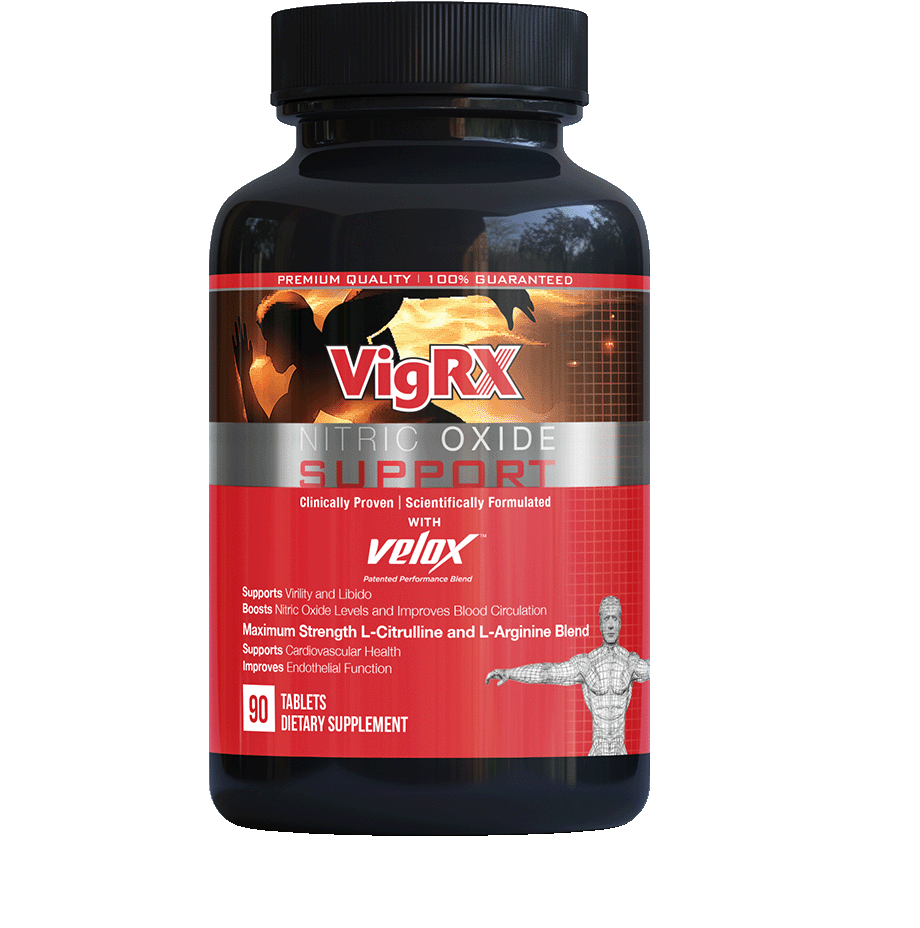
#9 Consider Supplements
Certain supplements help enhance vascular health and support circulation. L-Arginine is an amino acid that helps relax and dilate blood vessels, boosting blood flow, while Beetroot Powder, rich in nitrates, helps lower blood pressure, improving circulation.
Garlic has natural vasodilating properties to boost circulation, and nitric oxide boosters like VigRX Nitric Oxide help increase nitric oxide production, which supports better blood flow.
Always consult a healthcare professional before starting a new supplement regimen. They can help ensure the supplement is safe and effective and won’t interact with any medications or underlying health conditions.
#10 Kick the Habit
Quitting smoking is one of the best things you can do to improve your circulation. Smoking can cause blood vessels to constrict, reducing blood flow and increasing the risk of heart disease.
Boost Your Circulation with a Few Practical Tips
Now that we’ve covered the basics, let’s get down to some simple tips to boost your circulation.
#11 Stand Tall
Proper posture can help prevent blood vessels from compressing. When you slouch or hunch over, you put unnecessary pressure on your blood vessels, reducing blood flow.
Try standing up straight and taking regular breaks to move around and stretch.
#12 Dress for Success
Staying warm helps improve circulation, while colder temps can cause blood vessels to constrict. Dress in layers to keep warm and comfortable.
Avoid wearing tight clothing that restricts blood flow, and stay away from cold temperatures (when possible).
#13 Elevate Your Legs
Elevating your legs can also help boost circulation. Consider using a pillow or wedge to prop your legs up while sitting or sleeping.
Avoid crossing your legs or ankles for prolonged periods, which can restrict blood flow.
#14 Try Compression Socks
Compression socks are the secret to better leg circulation. They apply gentle pressure to the legs, pushing blood upwards towards the heart, which reduces swelling and promotes healthy blood flow.
To use compression socks properly, put them on in the morning, wear them throughout the day (even when you aren’t doing anything strenuous), and take them off before bed to avoid any discomfort.
#15 Stretch It Out
After a long day of sitting, stretching can reduce muscle tension and boost circulation. Try doing basic stretches like touching your toes, reaching your arms overhead, or doing leg swings.
You can even try some yoga poses to help loosen your muscles. And, of course, regular massages can also help stimulate blood flow and reduce stress.
#16 Get Brushed Up
Dry brushing is an effective way to promote lymphatic circulation and blood flow. Brushing your skin with a soft brush not only encourages the circulation of lymph fluid, it also helps remove dead skin cells.
Try dry brushing before showering to wake up your circulation and leave your skin feeling smooth and refreshed.
#17 Shock Your System
Cold showers are a great way to stimulate blood flow. The sudden temperature change causes your blood vessels to constrict first, then dilate, increasing circulation.
Try alternating between cold and warm water for a refreshing and invigorating experience.
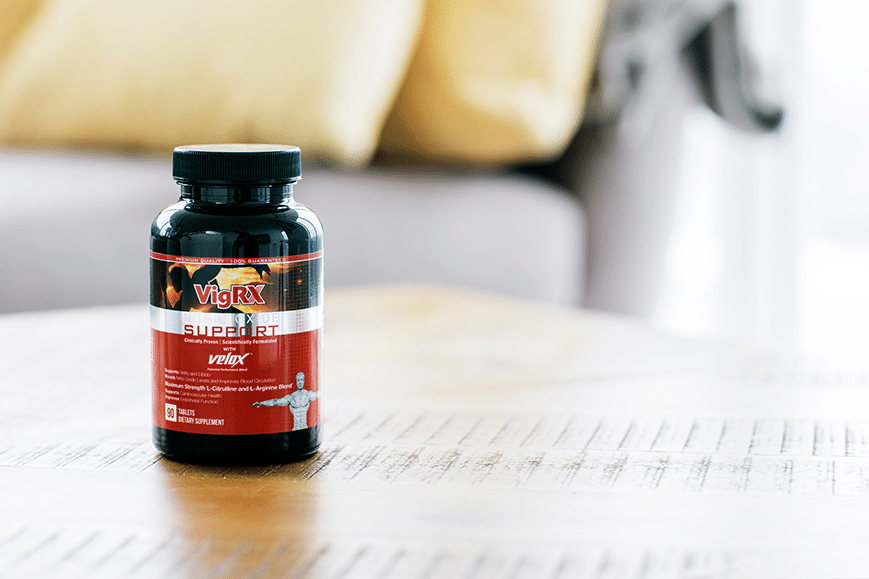
Supercharge Your Circulation, Naturally
Healthy circulation is the driving force behind our overall health and well-being. Without it, we’re stuck in a rut, dragging ourselves through the day only to repeat it again and again.
It’s time to boost your energy levels and tackle your day with confidence. Enhance your mental clarity and focus on your goals. Unlock your full potential and live the vibrant, healthy life you deserve.
Incorporating these simple habits and practical tips into your daily or weekly routine can support healthy blood vessel function and boost your circulation. From exercise and diet to stretching and standing tall, we’ve given you 16 fantastic ways to take control of your circulation.
And for those who want to kickstart their circulation, try boosting your nitric oxide with VigRX Nitric Oxide. It’s a safe and effective supplement proven to help encourage the body’s nitric oxide production, improving blood flow and overall health.
So, what are you waiting for? Start sipping on some green tea, taking cold showers, and spicing up your life. And enjoy the benefits of improved circulation every day forward.
Want to Improve Cognitive Health? Foods to Focus On and Avoid 13 Dec 2024, 5:58 pm
Cognitive health is critical to staying focused and mentally agile and avoiding those frustrating moments when your brain feels like it’s on a coffee break without you.
The foods we eat play a massive role in how well our brain “keeps up” with our daily demands, from remembering essential details (like where you left your keys) to staying focused when you’re trying to crush it at work.
This article explores the best (and worst) foods for your brain and offers a few extra tips to keep your mental edge razor-sharp as the years roll on.
Let’s get smarter, shall we?
Best Foods to Boost Cognitive Health
These brain-boosting foods are packed with nutrients that help keep your brain firing on all cylinders. They don’t just fuel your body; they improve focus, memory, and overall cognitive function.
Here are the best foods to stock in your kitchen to keep your brain in shape.
#1 Leafy Greens: Kale, Spinach, Broccoli
Your mom had it right when she told you to eat your greens. Leafy vegetables are packed with nutrients your brain loves, like Vitamin K, folate, lutein, and beta-carotene, which are linked to slower cognitive decline.
Vitamin K is a bit of a brain ninja, playing a vital role in memory and brain function. And folate helps protect your brain from homocysteine, an amino acid that can mess with your mental clarity.
Leafy greens give your brain a daily upgrade, keeping it sharp and alert for the long haul.
#2 Fatty Fish: Salmon, Mackerel, Sardines
We aren’t exaggerating when we say that fish is brain food. Fatty fish are rich in Omega-3 fatty acids like EPA and DHA, essential fats your brain relies on to build and repair cells.
About 60% of your brain is made of fat; a big chunk of that is Omega-3s. People with higher Omega-3 levels have been shown to have better mental clarity and are less likely to experience cognitive decline as they age.
Omega-3s help reduce brain fog while improving mood, memory, and cognitive performance. For those who aren’t fish fans, consider incorporating a high-quality Omega-3 supplement.
#3 Berries: Strawberries, Blackberries, Blueberries
Berries are a brain powerhouse as much as a sweet treat. Blueberries have been shown to boost memory and cognitive function while delaying brain aging. Strawberries and blackberries aren’t far behind, keeping your brain young and agile.
These little gems contain antioxidants and flavonoids, which help protect your brain from oxidative stress. Flavonoids are like your brain’s personal bodyguards, fighting off inflammation and improving communication between brain cells.
Mix them into smoothies or oatmeal, or eat them straight to add a mental boost to your breakfast or snack.
#4 Nuts: Almonds, Hazelnuts, Walnuts
Grab a handful of nuts for a quick snack that feeds your brain. Almonds, hazelnuts, and walnuts are rich in healthy fats, antioxidants, and vitamin E – all essential for brain health.
Walnuts might be the real superstars, though. They’re packed with an Omega-3 fatty acid (DHA) that helps prevent age-related cognitive decline and improve mental performance. Vitamin E protects your brain cells from oxidative damage, helping you stay sharp as you age.
Nuts are a solid choice for supporting cognitive health, whether munching on trail mix or adding some crunch to your salad.
#5 Dark Chocolate: Cocoa
Calling all chocolate lovers – dark chocolate isn’t just a treat for your taste buds but also for your brain. It contains antioxidants, flavonoids, and caffeine, all of which improve overall brain function.
Flavonoids (like those in berries) support healthy circulation in the brain, enhancing memory and cognitive performance. Antioxidants help protect the brain from oxidative stress, while caffeine offers a short-term boost in focus and mood.
Go for the good stuff – dark chocolate with at least 70% cocoa – to get the brain benefits without the sugar overload.
#6 Whole Grains: Brown Rice, Oats, Quinoa
Whole grains provide your brain with the energy it needs to function. They are rich in B vitamins (crucial for brain health). They also help regulate neurotransmitters (the brain’s communication system) and boost your mental energy.
Foods like brown rice, oats, and quinoa offer a steady supply of glucose (your brain’s preferred fuel source). Whereas refined carbs can cause sugar crashes, whole grains provide slow-burning energy to improve concentration and keep your brain sharp and focused throughout the day.
Swap the white bread for a whole-grain option to avoid feeling sluggish and mentally foggy.

Foods That Hinder Cognitive Health
While some foods help your brain thrive, others can slow it down, leaving you less focused and foggy. Ditching these brain-draining foods can help you stay sharp and ready to conquer the day.
Here are some of the biggest offenders (and alternatives to try instead).
#1 Refined Carbs: Pasta, Pastries, White Bread
White bread, pastries, pasta, and other refined carbs quickly break down into sugar. This causes blood sugar spikes, which are followed by inevitable crashes. Rollercoaster sugar levels adversely affect your brain’s ability to focus and retain information.
If you’re experiencing brain fog after consuming a carb-heavy meal, this rollercoaster might be why. These foods won’t help you ace any brain games. Instead, they can lead to impaired memory and concentration.
Keep your brain sharp and energized by swapping refined carbs for whole grains like brown rice, oats, and quinoa.
#2 Processed Foods: Chips, Frozen Meals, Fast Food
Are processed foods convenient? Sure. Are they good for your brain? Absolutely not.
Processed foods are high in unhealthy fats, contain tons of salt, and are loaded with artificial additives – all of which spell trouble for your cognitive health.
Diets rich in fast food and packaged snacks can lead to brain inflammation, slower cognition, and even shrinkage in vital areas responsible for learning and memory. That burger and fries might satisfy your cravings but won’t do your brain any favors.
Fuel your brain without harmful additives by reaching for whole, unprocessed options like fresh fruits, veggies, nuts, and lean proteins.
#3 Sugary Drinks: Energy Drinks, Soda, Sweetened Juices
Sugary drinks might offer a quick energy boost, but the cost is high – particularly for your brain. Excessive sugar consumption is linked to slower cognitive function, memory issues, and inflammation in the brain.
Those sugary beverages, energy drinks, and overly sweetened juices might make your brain as sluggish as a Monday morning without coffee. Too much sugar equals brain fog.
Keep your brain hydrated and alert by opting for water, tea, or unsweetened coffee.
#4 Trans Fats: Packaged Baked Goods, Margarine
Trans fats, found in margarine, frozen pizza, and many packaged baked goods, are notorious for harming heart health, but they’re just as bad for your brain health. They are linked to cognitive decline and poor memory.
Over time, trans fats can make you feel like you’re running on empty – increasingly sluggish and forgetful.
Give your brain what it deserves; skip trans fats and opt for healthy fats like those found in nuts, avocados, and olive oil.
Why a Brain-Healthy Diet Isn’t Always Enough
Even when you eat all the right foods, stress, aging, and modern lifestyles can damage your brain health. Eating a brain-boosting diet is a great start, but sometimes, it’s not enough to keep your cognitive health in peak condition.
Brain-Boosting Nutrients That Can’t Be Found in Foods
Certain essential nutrients, like specific nootropics, can be difficult to obtain solely from food. Nootropics are natural or synthetic substances that enhance cognitive functions like focus, memory, and mental clarity.
When even the best diet cannot give your brain everything it needs to stay sharp, it’s time to consider supplementation.
Here are some top brain-boosters you won’t find on your plate:
- Vitamins B12 and D3 – Vital for memory and mental clarity.
- Cognizin® – Protects neurons and enhances brain energy, focus, and mental clarity.
- Phosphatidylserine – Supports memory and cognitive sharpness.
- Acetyl-L-Carnitine – Improves energy production in brain cells, memory, and learning.
While vital for brain power, obtaining nootropics through diet alone is challenging, which is where supplements like Brain Pill come in. Natural nootropic supplements can fill the gaps where food falls short and give your brain the extra support it needs to thrive.

The Benefits of Brain Pill
Brain Pill is a nootropic supplement that helps you stay on top of your mental game without relying on sheer willpower (or endless cups of coffee).
When combined with a brain-healthy diet, Brain Pill provides that extra boost your brain craves, whether cramming for a big test, tackling a work presentation, or just remembering where you parked your car.
With proven ingredients like Cognizin® and Phosphatidylserine (those brain-boosters we just discussed), Brain Pill helps enhance memory, focus, and overall mental clarity. These ingredients are hard to get in significant quantities from food. Fortunately, this high-quality supplement offers a convenient way to bridge those nutritional gaps.
Balance and Supplements: Putting it All Together for Brain Health
Eating the right foods (and avoiding the ones that drag you down) is one of the easiest ways to boost your brainpower. But when your diet comes up short, give your brain the extra fuel it needs to stay sharp, focused, and ready for any challenge.
Brain Pill might be the perfect addition to your brain health routine if you’re serious about elevating your cognitive health. Because, let’s face it, even the sharpest minds need a little backup sometimes.
Your brain deserves the best, so give it the upgrade it needs.
Low HGH Levels: Symptoms, Causes, and How to Manage It 14 Nov 2024, 4:42 pm
Most guys don’t think about their hormone levels until something feels off. If you’re feeling run down, not quite as strong or energized as you used to be, or your workouts aren’t delivering the same results, low human growth hormone might be the culprit.
Human growth hormone (HGH) is a vital hormone that keeps men feeling youthful, strong, and mentally sharp. As we age, however, our natural production takes a nosedive, often earlier than expected.
Low HGH can sneak up on you, affecting everything from energy and muscle mass to fat storage and recovery time. It can even impact your libido. Many guys experience these changes and chalk it up to the inevitability of aging without realizing that low HGH is the cause.
The good news is that you aren’t powerless against it. By recognizing the signs and making some simple lifestyle adjustments, you can manage low HGH and start feeling like your younger, more vibrant self.
This blog explores the ins and outs of low HGH – what it is, why it happens, and how you can fight back to reclaim your energy and vitality.
Are you ready to regain your mojo? Keep reading to discover what you can do to keep your HGH levels in check.
What Happens When HGH Levels Drop?
A dip in HGH levels can have a domino effect on various aspects of men’s health. It’s easy to dismiss feeling tired or noticing a little extra weight as “just getting older,” but the real issue could be a drop in HGH in some cases.
Unfortunately, it isn’t talked about enough. So, let’s discuss what happens when your HGH levels decline. If any of these sound familiar, you’re not alone.
Energy and Recovery
Low HGH can mess with your sleep patterns, taking a significant toll on your energy levels. When it’s in short supply, you may find yourself running on empty even after a decent night’s sleep. You might notice it’s harder to shake off that mid-afternoon slump, no matter how much coffee you drink.
HGH is responsible for muscle repair and recovery, but when your levels drop, your body struggles to bounce back as quickly after workouts. When you’re feeling sore days after what used to be a routine workout, it can be challenging to stay consistent with your fitness regimen.

Muscle and Fat
Low HGH can also make it more difficult to build and maintain muscle. No matter how many reps you pump out, low HGH can impede your strength and muscle gains. Maintaining muscle is more than vanity; it’s crucial for overall health, mobility, and metabolism.
Speaking of metabolism, low HGH might be to blame for that extra cushion around your midsection. HGH helps regulate fat distribution, but when it declines, your body stores more fat – even if you’re watching what you eat and regularly hitting the gym.
Low Libido and Sexual Performance
Low HGH could be a factor if your sex drive has been lower than usual lately. HGH and testosterone are closely linked, and a dip in HGH can contribute to issues with libido and sexual performance.
Whether you’re not feeling as “in the mood” as you used to or you’re experiencing other performance-related problems, it might be time to explore what’s going on with your hormone levels.
Mood and Cognitive Function
Low HGH messes with the mind as much as the body, leaving you feeling mentally sluggish, irritable, or struggling to focus. Many guys with low HGH also experience mood swings and memory difficulties.
While you might not notice it immediately, the signs of low HGH can creep in and start affecting your daily life.
The Long-Term Impact of Low HGH Levels for Men
Ignoring low HGH levels is like neglecting your car’s oil change; eventually, things will break down, leading to a cascade of issues that are more than just a minor inconvenience. Untreated low HGH can impact your ability to feel good today and in the future.
In addition to muscle loss and increased body fat, low HGH over time can result in bone density issues, increased fracture risk, and a higher risk of cardiovascular issues.
You may also experience accelerated aging (internally and externally) and cognitive function and mood disorders, making you feel less like yourself and more like a “grumpy old man.”
Low HGH can compound and become more severe as time goes on, adversely impacting your libido and turning those romantic evenings into less-than-ideal PG-13 nights. Don’t let low HGH slow you down; take action and invest in your future health.
How to Know if You Have Low HGH
If you’re starting to wonder if you might be dealing with low HGH but are curious how to be sure, there are a few practical steps you can take to get a clearer picture.
No, there’s no magic mirror to check your hormone levels, but by reflecting on your daily life, you may find some answers.
Check in with your body. Are you feeling more tired than usual, dragging through the day without the energy you once had? Are you noticing stubborn belly fat creeping in? Are you struggling to build muscle? Or are you just not hitting your stride anymore? Keep track of any familiar signs; this will help you see patterns over time.
Pay attention to lifestyle factors. Your diet, sleep quality, and stress levels can all impact your body’s natural HGH production. If you’re burning the candle at both ends and eating whatever’s around, it might not just be a hormone issue but a lifestyle one.
Talk to your doctor. If your self-assessment raises any red flags, it is advisable to consult your healthcare provider. They can run blood tests to rule out other possible causes of your symptoms. It’s better to check your HGH levels than to brush it off as the price of getting older.
During diagnosis, a medical professional will run blood tests and discuss your symptoms and any lifestyle factors affecting your overall health. If you pursue HGH testing, you can expect the processes to measure hormone levels to be simple and non-invasive.
Common Causes of Low HGH in Men
Low HGH can be an unwelcome surprise, but understanding the potential causes helps you tackle the issue head-on.
Here are some of the most common reasons connected with this hormonal dip.
Age
Age is an inevitable factor in low HGH levels. As the years roll on, your body slows its HGH production. By the time you hit your 30s, declining HGH levels are as natural as finding a new gray hair or needing reading glasses for the first time.
Stress
Stress is the sneaky beast that wreaks havoc on your body and HGH levels. Elevated cortisol levels (often dubbed the stress hormone) can interfere with HGH production. When you’re constantly in fight-or-flight mode, it can lead to lower HGH. Find healthy ways to manage stress, whether from work pressures or life’s demands.
Sedentary Lifestyle
Lack of physical activity can contribute to low HGH levels. If your idea of exercise is lifting the remote control, it might be time to get off the couch and move. Regular exercise (especially high-intensity workouts) boosts your natural HGH production. You don’t have to run a marathon; even a brisk walk can make a difference.
Poor Sleep Habits
Quality sleep is vital for HGH production. If you’re pulling all-nighters for work or the latest streaming binge, it can leave you feeling like a zombie the next day. Furthermore, your body may struggle to produce enough HGH. Stop hitting snooze on your health and prioritize sleep.
Poor Nutrition
Your diet can hinder your body’s ability to produce HGH. To support your hormone health, focus on incorporating lean proteins, whole foods, and healthy fats. Also, remember to consume plenty of fruits and veggies to slow down HGH decline.
Medical Conditions
Certain medical conditions can directly impact your HGH production. For example, disorders of the pituitary gland, which produces this vital hormone, can contribute to lower HGH levels.
Once you recognize these common causes, you can proactively maintain healthy HGH levels and feel like your best self.
The Importance of Early Intervention
Don’t brush off the signs of low HGH. Your health is worth prioritizing. The sooner you tackle the issue, the easier it is to regain energy, boost strength, and improve overall well-being.
Catching the problem of declining HGH early can be a game-changer. Think of it like spotting a flat tire before hitting the road. Early intervention can help you avoid a rough ride later on.
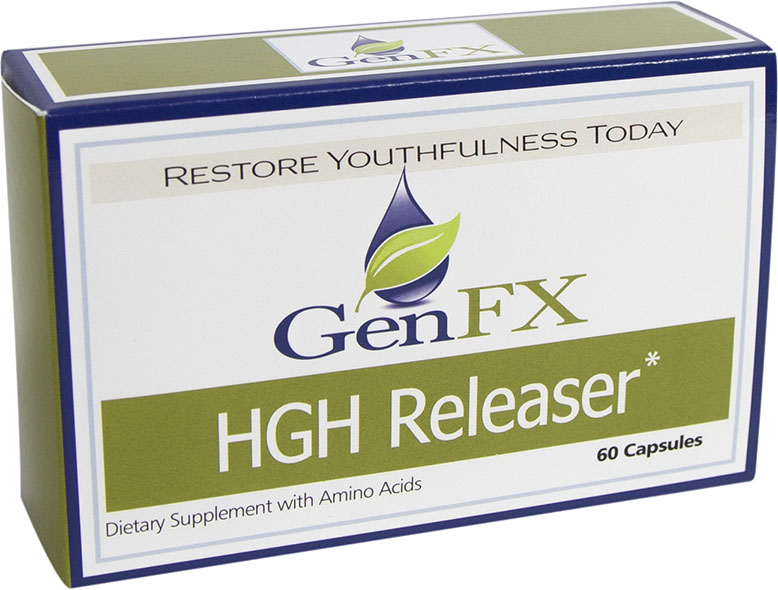
Take Control of Low HGH Levels Now, Feel Better Later
Low HGH isn’t a life sentence. Addressing issues like fatigue and muscle loss sooner rather than later makes managing low HGH possible. By recognizing the signs early, you can take proactive steps to feel like your younger self again.
While lifestyle changes like exercise, diet, and stress management can (and do!) work wonders, consider adding natural HGH releasers like GenFX to your routine. These supplements encourage your body to naturally increase HGH production, giving you an extra boost to reclaim your energy and strength.
You don’t have to settle for feeling worn out. Take control of your health and embrace a more vibrant, energized life.
Beetroot and its Clinically Proven Sexual Benefits for Men 17 Oct 2024, 5:09 pm
When it comes to improving your sex life, there’s no shortage of advice out there. Some of it’s good, while some of it is, well, not so much.
But what if we told you one of the most powerful tools for enhancing erections might already be in your kitchen?
Beetroot, the humble, earthy vegetable, is packed with the potential to ramp up your performance in the bedroom. It might sound a little strange at first. After all, vegetables rarely come to mind when thinking about sex.
But the secret lies in what it can do for your blood flow. Beetroot is loaded with naturally occurring nitrates that help your body produce nitric oxide, a critical player in achieving stronger, longer-lasting erections.
This article explores the science-backed benefits of beetroot for men’s sexual and overall health. Whether you’re already a fan of this root veggie or it’s never touched your plate, you’ll want to pay attention to what beetroot can do for you.
Discover why beetroot has earned a spot in the spotlight for guys looking to enhance their sex lives. Let’s get into it.
Why Is Beetroot So Special?
So, what’s the big deal about beetroot, and what does it have to do with your sex life? The answer is quite a bit. It all comes down to one word: nitrates. Beetroot is packed with nitrates, naturally occurring compounds that your body converts into nitric oxide.
Nitric oxide (NO) is like a VIP pass for your blood vessels, helping them relax and widen so they are ready to perform when needed. This is crucial because blood flows more freely when your blood vessels are relaxed.
More nitric oxide supports the natural processes needed for stronger, more reliable erections. In other words, beetroot gives your body a little extra help in getting more blood where it needs to go when it counts the most.
But the benefits of beetroot don’t stop there. By supporting and encouraging your body’s natural functions, beetroot can help you feel more energetic and ready for action, translating into longer, more satisfying sessions between the sheets.
The best part? It’s a natural way to give your performance an extra edge without relying on chemicals or contraptions. Now, let’s dive in to see how beetroot might just be the little-known powerhouse your sex life has been missing.
How Beetroot Enhances Sexual Performance
Let’s be honest – who doesn’t want a little boost in the bedroom? Beetroot might not be the first thing that comes to mind when looking for ways to spice up your sex life, but it has some surprising tricks up its sleeve.
For men who want to enhance their sexual performance, beetroot can help you stay in the game longer and with more confidence. Think of it as a natural way to help you rise to the occasion and perform at your best, making those intimate moments last longer and feel more satisfying.
Your body uses the naturally occurring nitrates in beetroot in a pretty clever way to help it function optimally when it matters most. Whether you’re looking to impress, improve your stamina, or just keep things exciting, beetroot allows you to tap into a natural source of support for your sexual health.
Other Health Benefits of Beetroot for Men
Beetroot goes beyond just boosting your bedroom performance. It’s packed with the nutrients your body needs to thrive, making it a game-changer for men’s health.
Here are some other benefits that can support your overall well-being, from supporting cardiovascular health to helping you stay energized throughout the day.
Supports Heart Health
Beetroot is also a friend to your heart. It’s an excellent part of a heart-friendly diet, whether you want to stay active or just take good care of yourself. Beetroot is a tasty way to maintain a healthy heart without too much fuss.
Thanks to its high nitrate content, beetroot can help your body in ways beyond just boosting sexual performance. By supporting the relaxation of blood vessels, beetroot helps reduce strain on the heart, keeping your cardiovascular system functioning smoothly.
Promotes a Balanced Response to Daily Stresses
Life’s daily stresses take a toll on the body, but beetroot can help you feel more balanced and resilient so you can stay on top of your game, mentally and physically, without missing a beat. It’s like giving your body a little extra armor to face whatever comes your way, whether you’re dealing with an intense workout or a hectic workday.
Thanks to its rich nutrient profile, which includes powerful antioxidants, beetroot supports your body’s natural ability to handle stress. This can help you feel your best by supporting a healthy, balanced response to your body’s wear and tear.
Improves Exercise Performance
Beetroot might be the boost you need to push your limits and up your game at the gym. It can help you see better results, whether going for a run or hitting the weights. Thanks to beetroot, guys looking to stay active and energized in all aspects of life might more easily find themselves powering through those last reps.
The nitrates and other nutrients in beetroot are known to support the body’s use of oxygen during physical activity. This vibrant root veggie may enhance endurance and stamina by improving oxygen utilization during exercise.

Get More Beetroot In Your Diet
Are you sold on the idea that beetroot could be your new ally in the bedroom but not quite sure how to incorporate it into your diet without feeling like you’re chewing on garden dirt?
Don’t worry – we’ve got you covered.
Fortunately, there are plenty of tasty ways to enjoy this vibrant veggie, whether you’re a fan of the taste or not. And none of them involve choking down raw beetroot (unless you’re into that sort of thing).
No matter how you enjoy it, incorporating beetroot into your diet is a simple and delicious way to support your sexual and overall health.
Beetroot Meals
If you don’t mind the taste of beetroot, one of the easiest ways to start is by roasting beetroot with other vegetables or tossing the roasted root veggie into your salads. It delivers a sweet, earthy flavor that pairs well with almost anything.
And if you’re not a fan of its distinct flavor, you can still incorporate it into meals by sneaking it into dishes like soups, stews, or even brownies (trust us, it works).
Beetroot Powder
Beetroot powder is another excellent, versatile option that can be added to smoothies, sprinkled over yogurt, or stirred into your morning coffee (yes, some people do that!).
You can also try blending beetroot with apples, berries, and a bit of ginger for a refreshing, nutrient-packed smoothie that’s as delicious as it is beneficial. The taste is sweet and earthy, making it a fresh addition to your daily routine.
Beetroot Juice
For the adventurous types, a small glass of beetroot juice can give you a serious boost. It offers a concentrated dose of all those good-for-you nitrates, making it a popular way to tap into the benefits of beetroot.
Beetroot juice is easy and convenient to find in stores, or if you’re feeling ambitious, you can juice fresh beetroot at home.
Beetroot Supplements
Not much of a cook, but the idea of drinking beetroot doesn’t quite appeal to you? No worries. Beetroot supplements or capsules are a convenient alternative for those who want the benefits without the fuss.
Supplements are perfect for busy guys who want to keep things simple, get their daily dose, and go. They deliver a concentrated dose of the beneficial compounds for a more consistent and potent boost without requiring daily juicing or cooking.
Erectin Male Enhancement Gummies: Why Supplements Might Be the Better Option
Beetroot capsules or gummies are incredibly convenient. Just pop a supplement, and you’re good to go. You can experience all the benefits without having to prep, peel, chop, or juice. And there are no messy beetroot juice stains to deal with.
Supplements like Erectin Male Enhancement Gummies offer an effective way to maintain your regular beetroot intake while enhancing erection quality and your overall sex life. It packs a punch with a well-rounded formula aimed at improving male sexual health and satisfaction in a tasty, convenient gummy form.
With these gummies, you’re not just getting a boost from beetroot. You’re also benefiting from other nitric-oxide-boosting ingredients, like L-Arginine, L-Citrulline, and Grape Seed Extract, working together to enhance your vitality, stamina, and sexual health.
Pop a few Erectin Gummies before your next date night, and enjoy a little extra confidence and readiness.
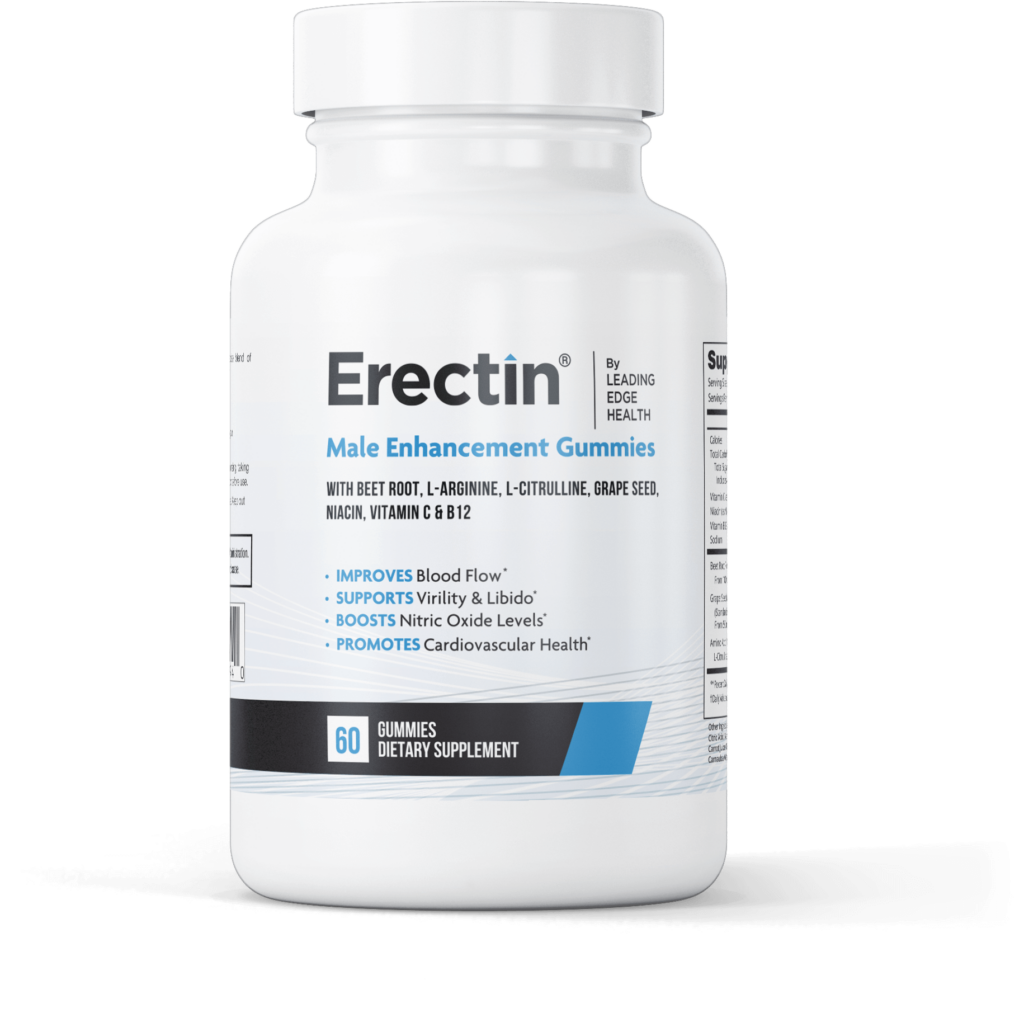
Boost Your Sexual Health and Vitality with Beetroot
Beetroot enhances sexual performance and is a powerhouse for overall vitality, helping you feel more energetic, confident, and full of life.
Adding beetroot to your wellness routine, whether through diet or supplements like Erectin Male Enhancement Gummies, gives your body the natural support needed to stay strong, healthy, and vibrant – in and out of the bedroom.
So why not give it a try?
Embrace the power of beetroot and take your performance up a notch. Your sex life will thank you.
How Ceramide Loss Can Age Your Face Prematurely 12 Sep 2024, 3:42 pm
Have you looked in the mirror and noticed your once-smooth skin is beginning to show signs of aging? Fine lines, wrinkles, and dryness that weren’t there before can leave you wondering what happened to your youthful glow.
The truth is, your face may be aging faster than you’d like due to the gradual loss of ceramides in your skin. Our natural ceramide production declines as we age, leading to unwelcome signs of aging.
While they may sound like something from a chemistry lab, ceramides are crucial to your skin’s natural structure. Think of them as the glue that holds your skin cells together.
But fear not. You can reclaim your youthful appearance.
This article explores what ceramides are, how they’re lost, the effects of their loss, and, most importantly, how you can replenish them to maintain healthy, radiant skin.
Join us as we uncover the secrets to keeping your skin youthful and vibrant at any age. Stick around, and let’s get your skin glowing again.
Are you ready to turn back the clock and give your skin the care it deserves?
What Are Ceramides?
Ceramides are fatty molecules found in the upper layers of your skin. Imagine your skin as a brick wall. The bricks are your skin cells, and the mortar holding them together is ceramides, which act as the glue that keeps everything intact.
Ceramides protect your skin, creating a barrier that helps lock in moisture to keep it hydrated and plump. They also block harmful environmental elements, like pollution and harsh weather, to help maintain your skin’s health and appearance.
Understanding how ceramides impact your skin is the first step to combating their loss. Next, we break down how ceramides are lost over time, empowering you to take action and restore your skin’s youthful barrier.
What Causes Ceramide Loss?
Ceramide loss usually starts in our 30s, leaving skin vulnerable to damage and increasing those pesky signs of aging.
As much as we would all love to stop time, we cannot halt the natural aging process. As we age, our bodies produce fewer ceramides, causing the skin’s brick wall to crumble and allowing moisture to escape.
Let’s review the main culprits of ceramide loss aside from aging:
- External Factors: Daily UV exposure, pollution, and harsh weather conditions damage our skin and break down ceramides, weakening your skin’s barrier and speeding up the aging process.
- Lifestyle: High stress levels, poor sleep quality, imbalanced diet, smoking, and excessive alcohol consumption can impair your skin’s ability to repair and regenerate, leading to a faster decline in ceramide production.
- Poor Skincare Habits: Over-exfoliating, using hot water to wash your face, skipping moisturizer, or using products packed with alcohol and other harsh chemicals strips away natural oils, including ceramides.
By understanding how these factors contribute to ceramide loss, you can make informed decisions to protect your skin and keep it looking its best.
Up next, we will examine the adverse effects of ceramide loss and how they manifest on the skin.
Visible Effects of Ceramide Loss
Skin saboteurs, from environment and lifestyle to skincare routine, can significantly accelerate ceramide loss. When ceramide production begins to slow, the effects can be pretty noticeable, compromising our skin’s barrier and leading to premature aging.
One of the most common side effects is dryness and dehydration. Without adequate ceramides, your skin struggles to retain moisture, leading to dry, flaky patches that no amount of moisturizer seems to fix.
Also, without ceramides, your skin is less protected from irritants that can cause itching, redness, and sensitivity (even to products you once used without a problem). In addition to an increased vulnerability to environmental aggressors, your skin may appear tired, dull, and less vibrant.
You may also see an increase in fine lines and wrinkles. Ceramides help your skin stay smooth and plump, so their loss makes it thinner and more prone to these well-known signs of aging.
While these changes can be frustrating, recognizing the root cause – ceramide loss – offers a clear path of action to support and replenish your skin’s ceramide levels, combating the visible signs of aging.
Keep reading to discover natural ways to replenish ceramides.

How to Naturally Restore Ceramides
How you care for your skin can help preserve ceramides or escalate their loss. Knowing what ceramides are and how they work can help you take proactive steps to protect your skin and keep it looking youthful.
Thanks to a few smart strategies for boosting ceramide levels, reclaiming your youthful glow is within reach. Here’s how you can restore this essential component to your skin.
Topical Solutions
A gentle skincare routine is crucial to protecting your skin from ceramide loss. Many creams, serums, and lotions formulated with ceramides can be pretty effective for targeting specific areas and provide immediate relief from dryness and irritation.
While topical products containing “ceramides” or “lipid complexes” offer quick fixes, they often only work on the skin’s surface and can be short-lived. You may notice a smoother, more hydrated complexion, but these results require consistent application.
Natural Sources of Ceramides in Foods
A nutrient-deficient diet deprives your skin of what it needs to stay healthy and hydrated. Incorporating ceramide-rich foods into your diet is a tasty way to support your skin’s health.
Here are some natural food sources of ceramides:
- Dairy: Include milk and cheese to strengthen your bones while keeping your skin barrier strong.
- Whole Grains: Oats, brown rice, and wheat germ are excellent sources that can be added to a meal or smoothie.
- Healthy Fats: Snack on a handful of almonds, nuts, or seeds, or toss some avocado on your toast to benefit from their skin-friendly nutrients, including ceramide.
- Soy Products: Boost ceramide levels with foods like tofu, soy milk, and edamame, which are versatile enough to be used in a variety of dishes, from stir-fries to snacks.
Adding these foods to your diet gives your skin the nourishment it needs to stay hydrated, smooth, and youthful while treating your tastebuds. Who knew eating your way to healthier, youthful-looking skin could be so delicious?
Oral Phytoceramide Supplementation
Supplementing with phytoceramides supports your skin’s natural barrier function. These plant-derived ceramides work from the inside out, replenishing ceramide levels throughout your entire body, not just on the surface.
Most supplements recommend a daily dose taken with meals. Incorporating phytoceramide supplements into your daily routine can be more convenient than changing your diet and longer-lasting than topical solutions.
While consistency is critical to seeing noticeable results, you can ensure your skin stays hydrated, smooth, and youthful-looking with a bit of commitment.
Benefits of Oral Phytoceramide Supplementation
Oral phytoceramide supplementation can provide more comprehensive and longer lasting benefits than topical applications.
Here’s why supplementing with phytoceramides can be a game-changer for your wellness routine:
- Enhance Hydration: Helps your skin retain moisture from within for a plumper, more hydrated complexion.
- Diminish Fine Lines and Wrinkles: Reduces the appearance of fine lines and wrinkles more effectively.
- Strengthen Skin Barrier: Fortifies your skin’s natural barrier against environmental damage, reducing irritation and sensitivity.
- Increase Skin Elasticity: Makes your skin more resilient and supple, minimizing sagging issues for a firmer, more youthful appearance.
- Even Skin Tone: Helps balance skin tone, reducing discoloration for a clearer, glowing complexion.
- Improve Overall Skin Health: Improves skin texture, leaving it smooth and radiant.
Supplementing with phytoceramides is an easy, effective way to keep your youthful glow shining bright. It’s like giving your skin a VIP treatment from the inside out without relying on multiple creams and serums.
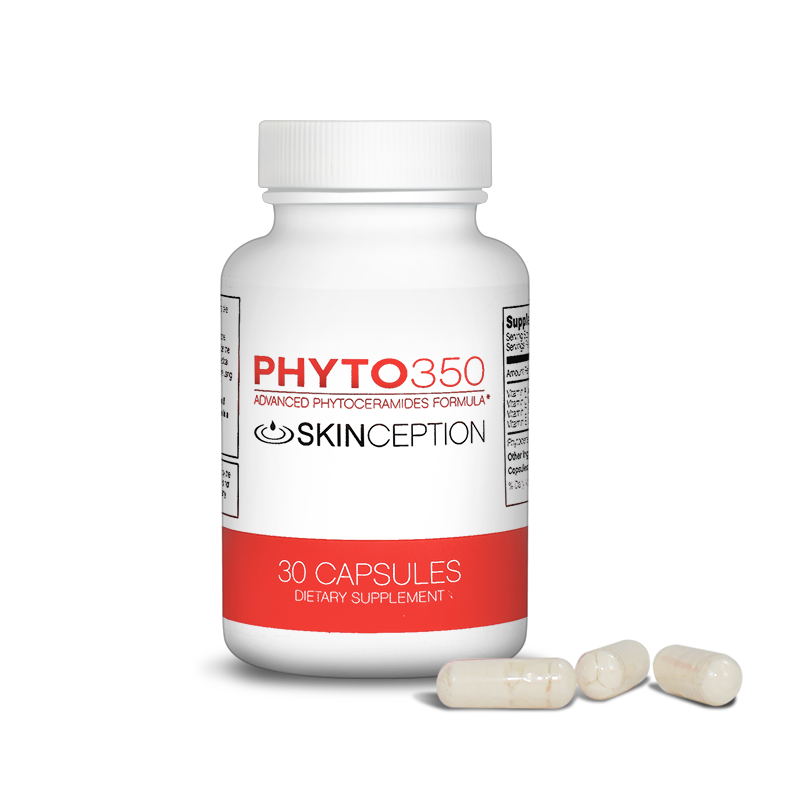
The Verdict: Oral Phytoceramide Supplementation for the Win
Oral phytoceramide supplements offer a holistic approach to skincare.
Here’s why we think they should be your number-one choice for replenishing ceramide levels:
- Comprehensive Benefits: They strengthen your skin barrier, reduce fine lines, and boost your skin’s hydration and overall health.
- Lasting Results: They offer sustained improvements, leading to better moisture retention and a more resilient skin barrier over the long term.
- Simple and Convenient: They are easy to incorporate into your daily life, enhancing skincare without adding extra steps to your routine.
Making dietary changes, incorporating topical treatments, and taking oral supplements can help you tackle ceramide loss from inside and out. By choosing oral phytoceramides, like Phyto350 by Skinception, you’re investing in your skin from within.
Give Your Skin the TLC It Deserves with Phytoceramide Supplements
Ceramides are essential for keeping your skin youthful and hydrated; restoring them is easier than you think.
Imagine waking up with skin that feels softer, stays hydrated all day, and looks more youthful. That’s the power of phytoceramides working from within.
Adding Phyto350 by Skinception to your wellness regimen could be the secret to a sustained youthful appearance and a radiant glow.
With phytoceramide supplements, you can give your skin the nourishment it craves and a daily dose of youthful vitality. While aging might be inevitable, looking and feeling fabulous is within your control.
Cheers to turning the clock back and embracing a bright future ahead!
Skip the Junk Food – High Protein Snacks to Fuel Your Day 14 Aug 2024, 7:57 pm
We’ve all been there – trying to get through the mid-afternoon slump by grabbing a quick snack from the vending machine. It’s all too easy to fall prey to the allure of chips, candy bars, and other unhealthy treats.
While we may get a momentary boost from these junk foods, the energy crash that comes later doesn’t do our bodies any favors in the long run. Instead, try reaching for high-protein snacks. High-protein snacks offer a healthier option that curbs hunger while fueling your day with sustained energy.
These power-packed alternatives keep you full longer, boost your metabolism, and support muscle growth while stabilizing your blood sugar to help you avoid the dreaded energy crash.
Choosing high-protein snacks over junk food can significantly improve your health, whether at the office, on the go, or just craving a satisfying treat. They aren’t just for bodybuilders or fitness enthusiasts. They are for anyone who wants to feel better and stay energized throughout the day.
So, ditch the vending machine fare and make high-protein snacks your best friend.
With the right choices, you can enjoy delicious and nutritious snacks that benefit your body and mind and keep you going strong all day long.
Top Benefits of a High-Protein Diet
Switching to a high-protein diet offers benefits beyond muscle building, enhancing overall health and quality of life. Next time you’re reaching for a snack, consider how choosing a high-protein option can boost your mind and body to get through the day.
Let’s explore the benefits of incorporating more protein into your daily routine for your health and well-being.
Effective Weight Management
A high-protein diet promotes weight management by increasing feelings of fullness and reducing overall calorie intake. Protein curbs pesky hunger pangs that often lead to unhealthy snacking by keeping you satiated longer.
Maintain and Grow Muscle
Muscles need protein after exercise or physical activity to recover and build new tissue. Although it’s essential for muscle repair and growth, protein is crucial for everyone, not just athletes. Building new muscle tissue improves your fitness while ensuring your body remains strong and functional as you age.
Improve Your Metabolism
Digesting protein requires more energy than fats or carbohydrates, boosting your metabolism. The more energy you use processing protein, the more calories you burn. This increase in metabolic rate aids in weight loss efforts and makes maintaining a healthy weight significantly easier.
Boost Energy Levels
Sugar-laden snacks are associated with quick highs and lows, but protein provides a steady energy source throughout the day. Sustained energy release allows you to stay active and productive longer, preventing the crash that often comes with sugary snack options.
Enhance Mood and Brain Function
Blood sugar spikes and crashes can significantly impact your mood and cognitive function. By stabilizing blood sugar levels, high-protein foods help maintain steady energy levels, enhance concentration, boost mood, and improve mental clarity.

10 Tasty (and Convenient) High-Protein Snacks for Better Health
Incorporating high-protein snacks into your diet is simpler than you think, yet it profoundly impacts your energy levels and overall health. By making smarter snack choices, you can support your long-term health goals.
The next time you’re tempted to grab some junk from the vending machine, consider these 10 high-protein alternatives to help keep you full, energized, and satisfied throughout the day.
#1 Greek Yogurt
Greek yogurt, a convenient and versatile snack, is packed with a high protein content. A single serving of Greek yogurt can provide between 13 and 20 grams of protein. It’s also rich in probiotics, which are beneficial for gut health, making it an excellent choice for muscle maintenance and repair and healthy digestion.
Greek yogurt is made by straining regular yogurt to remove the whey, leaving behind a thicker, creamier texture. Consider pairing it with fresh fruit, nuts, or a bit of honey for a well-balanced snack that combines protein with healthy carbohydrates and fats.
#2 Cottage Cheese
Cottage cheese is another excellent high-protein snack choice. One cup of creamed, small curd cottage cheese offers 25 grams of protein. Since it’s low in fat and calories, it’s also a great option to support weight management efforts.
Cottage cheese is rich in casein, a slow-digesting protein that keeps you feeling full for an extended period. Pair it with fruits like pineapple or berries for a sweet, savory combination, or sprinkle nuts and seeds for extra crunch and nutrition.
#3 Edamame
Young soybeans, commonly known as edamame, are a plant-based protein powerhouse. One cup of cooked, shelled edamame provides 17 grams of protein. Edamame is also rich in fiber, vitamins, minerals, and antioxidants, which help protect your cells from damage.
Due to its high folate and vitamin K levels, edamame also supports heart health. Simply steam or microwave the beans and sprinkle with a bit of sea salt to enjoy this simple, filling snack.
#4 Nut Butter with Celery or Apple Sticks
Most nut butters are jam-packed with protein, healthy fats, fiber, vitamins, and minerals. Seed butters are an excellent alternative for those allergic to peanuts and tree nuts.
The following protein is contained per two tablespoons (tbsp):
- Almond Butter: 5-7 grams
- Walnut Butter: 5 grams
- Peanut Butter: 8 grams
- Cashew Butter: 6 grams
- Sunflower Seed Butter: 8 grams
Nut and seed butters create a balanced, delectable snack when paired with celery sticks or apple slices. The combination offers a nutritious mix of protein, fats, and carbohydrates, perfect for sustaining energy levels.
#5 Hard-Boiled Eggs
Hard-boiled eggs are a portable, nutrient-dense snack. Any way you consume it (boiled, poached, scrambled, fried, omelet), one egg contains about 6 grams of high-quality protein. They make a satisfying snack that helps curb hunger and provides sustained energy.
Eggs also provide essential vitamins and minerals such as vitamin B12, vitamin D, and choline. Choline is especially significant for supporting brain health. Hard-boiled eggs can be prepared in advance and seasoned with a pinch of salt, pepper, or paprika for added flavor.
#6 Tuna
Tuna packets are a protein-rich on-the-go snack option. Each packet typically contains between 17 and 20 grams of protein. One can of canned tuna can provide up to 26 grams of protein.
In addition to protein, tuna is low in calories and fats and high in omega-3 fatty acids, making it beneficial for heart health and weight management efforts. Enjoy it straight from the packaging or get creative by mixing it with olive oil, lemon juice, and herbs for a burst of flavor.
#7 Jerky
Jerky is a portable, high-protein snack that is also low in fat and calories, making it an ideal choice for those watching their weight. Beef, turkey, and salmon jerky are all excellent sources of protein.
Here’s how much protein you can get from each tasty snack per ounce:
- Beef Jerky: 7-10 grams
- Turkey Jerky: 8-13 grams
- Salmon Jerky: 10-11 grams
- Venison Jerky: 9-13 grams
- Chicken Jerky: 10+ grams
Jerky is the perfect grab-and-go snack for busy days when you need a quick and easy protein boost. Remember to choose jerky that is low in sodium and free from artificial preservatives.
#8 Roasted Chickpeas
Chickpeas, or garbanzo beans, are high in fiber and plant-based protein. Cooked chickpeas offer about 15 grams of protein per cup. This crunchy and satisfying snack also aids digestion and helps control your appetite. Chickpeas are incredibly easy to add to your diet and won’t break the bank.
To make roasted chickpeas, toss them in olive oil and your favorite spices, then bake until crispy for a balanced, nutritious snack. To make hummus, blend chickpeas with tahini, lemon juice, and garlic, another delicious option that can be paired with veggie sticks or whole-grain crackers.
#9 Protein Bars
Protein bars are an easily accessible way to ensure you get enough protein throughout the day. A typical serving provides between 10 and 20 grams of protein, making them perfect for days when you need something quick and easy to keep you going.
Look for protein bars that are low in added sugars and contain natural ingredients. Protein bars are available in various flavors and can be enjoyed independently or paired with a piece of fruit for added nutrition.

#10 Protein Shakes
Protein shakes are an ideal snack option for post-workout recovery or a midday energy boost. Unlike snacks high in sugar but low in nutrients, protein shakes are low in calories, supporting muscle growth and weight management. Shakes like Whey Protein Isolate provide around 20-25 grams of protein per serving and often come in various delicious flavors like chocolate, vanilla, and strawberry.
Whey protein isolate, a high-quality protein derived from milk, is processed to remove most of the fat and lactose, leaving a powder over 90% pure protein. The body quickly absorbs this type of protein, satisfying your sweet tooth without leading to weight gain.
Embrace the Power of Protein
High-protein snacks can satisfy your midday cravings while supporting your health and well-being. Next time you’re eyeing that candy bar or bag of chips, think about the long-term perks of opting for a convenient and nutritious alternative.
Here’s to smarter snack choices for a healthier, more energized you!
10 All-Natural Ways to Deal With Your Erection Issues 19 Jul 2024, 9:58 pm
Let’s talk about something that might be weighing on your mind but isn’t necessarily the most comfortable topic to discuss openly – those unfortunate moments when things downstairs don’t quite go according to plan.
That’s right, we’re talking about those occasional times when your soldier doesn’t stand at attention like it should. Guess what? It happens to the best of us.
It’s perfectly natural to feel a bit concerned or frustrated about it. The good news? There are plenty of natural ways to tackle these erection issues.
Today, we explore ten natural strategies for navigating these unexpected challenges and getting your love life back on track.
If you’re eager to discover how to maintain optimal performance in the bedroom, stick around. We’ve got your back – and your front, too!
What Causes Erectile Issues?
Hiccups in the bedroom are more common than you might think. Even the most virile guys can encounter a temporary glitch now and then. It’s all part of being human.
Understanding the underlying causes is the first step to ensuring these challenges don’t persist and become frequent occurrences. The critical thing to remember is that occasional erection issues don’t necessarily indicate a long-term problem.
So, what’s behind those moments when the main event doesn’t quite live up to expectations?
In reality, various factors can impact sexual function. Sometimes, it’s a matter of stress or fatigue. Other times, it could be linked to performance anxiety or other psychological factors.
Here are some of the most common causes of experiencing erectile difficulties:
- Poor Dietary Habits
- Sedentary Lifestyle
- Excessive Alcohol and Substance Use
- Smoking
- Poor Circulation
- Relationship Issues
- Underlying Health Conditions (i.e., diabetes, heart disease)
- Side Effects from Medications
Now, let’s dive into the practical insights and tips for effectively addressing sporadic erection issues.
#1 Eat Testosterone-Boosting Foods
An unhealthy diet can negatively influence testosterone production. Testosterone is a key player in maintaining erectile function and regulating libido. Nutrient-dense foods improve overall sexual health and optimize testosterone levels.
Boosting testosterone levels through diet can help you tackle erection issues head-on. Foods rich in zinc and vitamin D, such as oysters, lean meats, nuts, fatty fish, eggs, and fortified dairy products, help enhance testosterone production.
Incorporate foods high in antioxidants and nitric oxide precursors for more sustained erections. Leafy greens, berries, citrus fruits, and beets support better blood flow, ensuring stronger, more reliable erections.
#2 Prioritize Quality Sleep
Adequate sleep is as essential for sexual health as it is for feeling refreshed. Restful sleep plays a vital role in regulating hormone levels, including testosterone. Additionally, prioritizing quality sleep supports cardiovascular function, ensuring optimal blood flow.
For better sleep, start by establishing a consistent bedtime routine. Limit caffeine and dense meals close to bedtime. Minimize light, noise, and screens in the bedroom to cultivate a relaxing environment.
Consider incorporating relaxation techniques to help you unwind before sleep. Implementing these tips ensures you’ll wake up energized while supporting your sexual health and performance.
#3 Exercise More
Regular exercise can sculpt your muscles while boosting cardiovascular health. It can help you shed pounds while enhancing stamina and blood circulation. Better blood flow throughout the body helps promote erectile function.
Incorporating exercise into your daily routine doesn’t have to be overwhelming. Get your heart rate up by engaging in aerobic exercises like jogging, cycling, or brisk walking. Start small, aiming for at least 30 minutes of moderate-intensity activity most days of the week.
Consistency is crucial whether you decide to hit the gym, go for a run in the park, or take up a new sport. Find activities that you enjoy so you can stick with them in the long term and reap the sexual health benefits.
#4 Minimize Vices
Smoking and excessive alcohol consumption significantly undermine your sexual health and performance. Smoking damages blood vessels and restricts blood flow, directly affecting your ability to achieve and maintain erections. Excessive alcohol consumption impairs nerve function and decreases testosterone levels, leading to erectile issues.
Recognize the considerable impact these vices have on erectile function. Take steps to minimize these vices and enhance your sexual function. Try cutting back gradually. Join a smoking cessation program or seek assistance from support groups or counseling services.

#5 Enhance Blood Flow
Optimal blood flow is crucial for achieving and maintaining firmer, sustained erections. When blood circulation is impaired, it can hinder your ability to realize sufficient rigidity for sexual activity.
Certain yoga poses can improve flexibility and circulation, directly benefiting erectile function. Poses like cobra pose, downward-facing dog, and pelvic tilts help stretch and strengthen muscles.
Ensure your diet includes antioxidant-rich foods to support vascular health and enhance blood flow. Boost your circulation by engaging in regular cardio exercises like swimming or running. Prioritizing activities that promote healthy blood flow helps you achieve better erectile health.
#6 Reduce Stress
Stress can wreak havoc on our circulation, a crucial component for getting hard and staying hard. When stressed, the body releases cortisol (the stress hormone), which constricts blood vessels and inhibits blood flow to the genital area.
Reducing stress is more than just finding your zen. It’s about boosting blood flow to where it counts – your erection. There are many ways to reduce stress, from deep breathing exercises and meditation to regular physical activity and spending quality time with friends and loved ones. Find what works for you.
Prioritizing stress management can make a world of difference in improving sexual health, performance, and well-being. Adopt stress-busting techniques and reclaim your mojo in the bedroom.
#7 Ease Performance Pressure
Performance anxiety can hinder the natural flow of arousal, creating unnecessary pressure and casting a shadow over the bedroom. A preoccupied mind significantly impacts erection quality. When the mind is worried about not meeting expectations or fully satisfying a partner, a self-perpetuating cycle of stress and anxiety can develop.
Counteract performance pressure by incorporating mindfulness and relaxation techniques into your daily routine. Meditation practices help calm the mind and alleviate anxiety, and simple breathing exercises can promote arousal control and relaxation.
Cultivate present-moment awareness to release tension, allowing you to approach sexual experiences with a sense of ease and acceptance. Focus on enjoying the moment and connecting with your partner rather than fixating on performance expectations.
#8 Foster Open Communication
Honest communication promotes mutual understanding and helps strengthen the bond between you and your partner. Openly discussing sexual concerns, worries, and desires in a supportive environment can be beneficial for both of you.
While it may feel daunting to initiate these conversations, discussing your erectile difficulties with your partner can alleviate feelings of isolation. It also empowers you to tackle the issue together as a team.
Approach the discussion with honesty, empathy, and sensitivity in a comfortable setting. The aim is to enhance connection rather than place blame or create tension. Prioritizing open communication allows you and your partner to navigate challenges with resilience and solidarity.
#9 Strengthen Pelvic Floor
You may not think of the pelvic floor when you think of erectile function, but it plays a vital role in maintaining sexual health and erection quality. Pelvic floor muscles support the organs in the pelvic region, including the reproductive organs and the bladder.
Strengthening these muscles can enhance erectile function and improve sexual performance. Kegel exercises (or Kegels) involve contracting and relaxing pelvic floor muscles, similar to the sensation of stopping the flow of urine.
Practice Kegels to increase blood flow to the genital area, improve bladder control, and boost the strength of the pelvic floor muscles. These discreet exercises promote better sexual health and provide an effective way to address erection issues.
#10 Consider Natural Supplements
Natural supplements can be valuable allies for achieving optimal sexual health. For centuries, traditional medicine has relied on natural ingredients to increase libido, improve male sexual and reproductive health, enhance blood flow, and boost testosterone levels.
Ginseng, Maca Root, and Horny Goat Weed are often used to improve erectile function, while Zinc is known to support sperm production, and vitamin D is essential for testosterone production. Ginkgo Biloba, Damiana Leaf, and Tribulus Terrestris are recognized as natural aphrodisiacs and help increase sexual desire and libido.
With proper guidance, natural supplements and topicals can complement other strategies in promoting overall sexual wellness. Consulting a healthcare professional before beginning a new supplement regimen is advisable, especially if you have underlying health conditions or are taking medications.
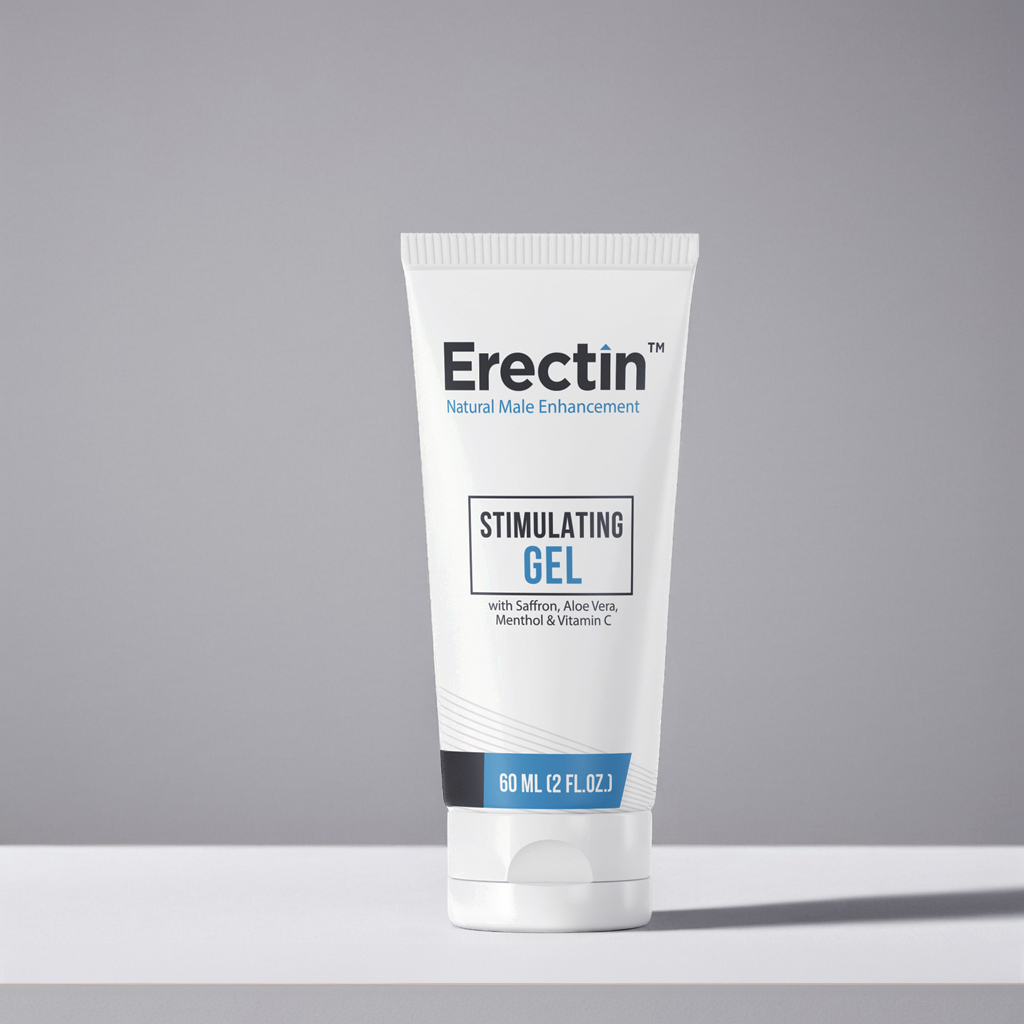
Conquer Erection Issues, Naturally
Today, we explored ten natural strategies for addressing a variety of erection issues, from eating testosterone-boosting foods and prioritizing quality sleep to strengthening your pelvic floor and supplementation.
Find what works best for you and take proactive steps to naturally improve your sexual health. For guys looking for a complementary strategy, Erectin Gel is a fast-acting topical for enhancing sexual performance and improving erection quality.
Take control of your sexual health and wellness today and enjoy the benefits of a healthier, more fulfilling sex life. You’re in charge, and your journey to better sexual health starts now.
Male Fertility – 10 Habits to Avoid for Peak Reproductive Health 27 May 2024, 4:30 pm
Picture a future filled with the pitter-patter of little feet, a dream many of us share. Unfortunately, many of our everyday habits may be quietly sabotaging this dream. Seemingly innocuous choices wield significant influence over our fertility.
If you’re ready to take charge of your fertility, what you do today may impact your goal for a family tomorrow. Don’t know where to start? Fear not!
Our spotlight today is on the often overlooked but crucial male fertility issue. This guide is exclusively for guys interested in creating life, not just living it. We can help you steer clear of common pitfalls and move toward a future brimming with reproductive vitality. It’s time to safeguard your swimmers and rewrite the playbook on male fertility.
The journey to optimal reproductive health begins today with learning how our movement and consumption impact our fertility. We’ll arm you with actionable tips and valuable insights into fertility health; you only need a dash of determination.
Join us as we unveil 10 everyday habits you’ll want to avoid if you’re going to reclaim control of your reproductive destiny.
#1 Sedentary Lifestyle
It’s time to kick those sedentary habits to the curb. Fertility is intricately linked to your level of physical activity. So get off that couch because prolonged periods of sitting can do more than wreak havoc on your posture. It can throw a wrench into your fertility machinery.
Research suggests that men who lead sedentary lifestyles can experience decreased sperm quality and lower sperm counts compared with their more active counterparts1. This is primarily due to blood flow. Extended periods of sitting reduce blood circulation to the pelvic region, hindering the production of healthy sperm.
Fortunately, you don’t have to become a gym rat overnight. Making simple lifestyle changes can make a world of difference. Make movement a non-negotiable part of your day, whether a stroll in the park, a quick dance break in your living room, or swapping out the stairs for the elevator.
#2 Poor Diet
When it comes to fueling our bodies, filling them with junk is akin to filling a high-performance engine with low-grade fuel. It’s a recipe for disaster, especially when it comes to fertility. Balanced nutrition isn’t just a buzzword; a poor diet affects more than our waistlines.
Research suggests that a diet high in processed foods, saturated fats, and sugar not only leaves you feeling sluggish but also takes a toll on sperm health and reproductive function2.
What we put on our plates matters, so load up on antioxidants like vitamins C and E, selenium, fruits, vegetables, whole grains, healthy fats, and lean proteins. Opting for a fertility-friendly diet packed with essential nutrients helps protect those precious swimmers.
#3 Chronic Stress
In the fast-paced hustle of modern life, stress often feels inevitable. Its impact on male fertility is nothing short of alarming. Chronic stress affects the intricate processes of our reproductive system, disrupting hormonal balance and impairing sperm production3.
Elevated cortisol levels can wreak havoc on sperm count, motility, and morphology, resulting in fertility woes. When cortisol (the body’s primary stress hormone) levels are high, it suppresses testosterone production and interferes with sperm development.
Keep those stress levels in check! There are ways to tame the stress beast and safeguard your fertility. Incorporate stress-reduction techniques such as meditation, carve out time for hobbies you enjoy, or engage in regular physical activity to support optimal reproductive function. So, take a deep breath, exhale the tension, and focus on restoring your body and mind balance.
#4 Exposure to Electronic Devices
Laptops, smartphones, and tablets are our constant companions in today’s digital age, but they may be waging a war on male fertility.
Although further research is needed, initial studies suggest that prolonged exposure to radiofrequency electromagnetic radiation (RF-EMR) negatively impacts total motile sperm count (TMSC)4. TMSC is one of the better predictors of achieving pregnancies.
Tech-savvy guys needn’t worry, for there are simple strategies to minimize the impact while staying connected. For example, keep digital devices away from the groin area during extended use and create a barrier between your device and your lap to reduce direct exposure.

#5 Excessive Cycling
For the pedal-pushers, cycling or biking is a fantastic way to stay fit while exploring the great outdoors. But while it may offer an adrenaline rush along with scenic vistas, overdoing it could put a spoke in your fertility wheel.
Extended sessions in the saddle can compress blood vessels and nerves in the genital area, compromising circulation and nerve function. Beyond the discomfort, research indicates that cycling may increase the risk of experiencing fertility and erectile issues5.
Don’t hang up your helmet just yet, fellow riders. Taking proactive measures can safeguard your fertility without bidding farewell to your two-wheeled companion. Use a properly fitted saddle, take regular breaks during long rides, and opt for padded cycling shorts to mitigate the risks of excessive cycling.
#6 Hot Baths and Saunas
Indulging in a relaxing sauna or a steaming hot bath may seem like an ideal way to unwind after a taxing day, but heat is the silent nemesis of sperm. While it may be the ultimate relaxation therapy, excessive heat exposure can wreck the delicate balance required for optimal sperm development.
Recent studies have uncovered potential risks associated with increased heat exposure, including decreased sperm count and compromised sperm quality6. The testes prefer to keep things cool, and when your body temperature rises above the norm in the outer regions, it creates an inhospitable environment for sperm production.
Sperm production thrives in slightly lower temperatures than the rest of the body, so consider limiting your time in hot baths and saunas to minimize heat exposure. Opt for shorter sessions, take regular breaks, and allow your body ample time to cool down afterward to help maintain a healthy scrotal environment.
#7 Tight-Fitting Clothing
While fashion trends come and go, comfort is always in style – especially regarding your groin. Snug underwear and pants, as fashionable as they may be, come at a cost to your fertility.
Tight garments items can crank up the heat in your genitals, and not in a good way. By their very nature, constricting briefs and skinny jeans create a sauna-like environment for your precious cargo. The temperature rise can lead to diminished sperm quality and quantity.
Fret not, fashion-forward fellas; you don’t need to sacrifice style for sperm health. But next time you’re tempted to squeeze into those snug briefs or jeans, remember to give your swimmers room to breathe. Opt for looser, breathable fabrics like cotton to maintain a cool, comfortable climate down below.
#8 Smoking and Excessive Drinking
If you’re serious about safeguarding your fertility, your first steps must be stubbing out that cigarette and rethinking that extra drink. In addition to being detrimental to your lungs and liver, smoking and excessive alcohol consumption are significant adversaries to your swimmers7.
Smoking introduces a cocktail of toxins into your system, decreasing sperm quantity, damaging quality, and impairing motility, making it harder for them to reach their target. Meanwhile, the occasional beer or glass of wine may be harmless, but excessive alcohol intake can disrupt hormone levels, impairing sperm production.
Consider quitting smoking altogether and moderating your alcohol consumption to support your fertility. Every step toward a smoke-free, sober, or responsible lifestyle is a step toward optimizing your reproductive health. Your future mini-mes will thank you.
#9 Environmental Toxins
Environmental toxins lurk in the most unexpected places, silently threatening male reproductive health. Chemicals like phthalates and bisphenol A (BPA) are found in everyday plastics, cleaning agents, and personal care items, making them nearly impossible to avoid.
From air pollution to pesticide-laden foods, hidden dangers are all around us. These insidious culprits disrupt the balance necessary for optimal fertility, interfering with hormone levels and sperm production8. Minimizing exposure to these environmental toxins whenever possible is crucial to safeguard fertility.
Be mindful of environmental pollutants in your surroundings and take steps to mitigate their impact, such as avoiding areas with heavy traffic congestion and using air purifiers. Opt for organic produce to minimize pesticide exposure, choose natural cleaning products, and limit your use of containers and packaging with BPA.
#10 Insufficient Sleep
Sleep often takes a backseat with so many things filling our to-do lists. But skimping on shut-eye has a profound impact on male fertility. Sleep deprivation or irregular sleep patterns sabotage reproductive health, disrupting hormone production and the body’s natural rhythms.
Studies reveal that infertility across all age groups can be adversely affected by the quality, timing, and duration of sleep9. Adequate sleep is crucial for maintaining hormonal balance and protective reproductive health.
Prioritize getting sufficient, uninterrupted rest each night, maintaining a consistent sleep schedule whenever possible. Minimize light and noise, adopt pre-bedtime relaxation techniques, and limit caffeine and electronic devices before bedtime to optimize your sleep environment and promote better sleep quality.

Maximize Your Fertility Today for Tomorrow’s Dreams
Your fertility health matters. When every little swimmer counts, you can’t afford to sit back and wait. Take charge by making mindful lifestyle choices to maximize your chances of conception. Remember, small changes can yield significant results.
For an extra fertility boost, consider incorporating VigRX Fertility Factor 5 into your routine. This natural supplement is designed to help improve sperm count, shape, movement, and development and increase semen volume.
Ensuring optimal fertility isn’t just a concern for the far-away future. It begins now with proactive steps and the proper support. Set out confidently on the journey to fatherhood.
Endnotes
1. https://www.ncbi.nlm.nih.gov/pmc/articles/PMC6481765
2. https://www.ncbi.nlm.nih.gov/pmc/articles/PMC8910394/
3. https://www.ncbi.nlm.nih.gov/pmc/articles/PMC10092477
4. https://pubmed.ncbi.nlm.nih.gov/34969603/
5. https://www.ncbi.nlm.nih.gov/pmc/articles/PMC10307666
6. https://www.ncbi.nlm.nih.gov/pmc/articles/PMC9288403/
7. https://pubmed.ncbi.nlm.nih.gov/23321190/
Hair Growth Inhibitor: A Secret Way to Avoid Springtime Stubble? 4 Apr 2024, 5:23 pm
Spring ushers in a season of rejuvenation and outdoor activities. The warm embrace of sunnier days and the promise of blossoming flowers leave us contemplating the age-old ritual of hair removal. The desire for smoother skin leads many on a quest for safe, effective, and lasting solutions.
While the traditional methods of waxing, shaving, and, more recently, hair removal creams have dominated the market, a subtle revolution is underway for those with smooth skin aspirations.
Shifting towards a more sustainable and progressive approach to hair management, many individuals have unearthed a powerful yet discreet ally in personal grooming – the hair growth inhibitor.
Today, we unravel the mysteries surrounding the hair growth cycle, from the impact of lifestyle choices to the role genetics and hormones play, as we explore the science behind inhibiting hair growth. We also investigate hair growth inhibitors as a potential secret weapon against the persistent specter of springtime stubble.
Join us as we explore an alternative that doesn’t merely trim the surface but challenges the very roots of regrowth in the pursuit of smooth, hair-free skin.
Factors Influencing Hair Growth
A complex interplay of factors determines the duration of each hair growth phase, influencing the length, thickness, and health of hair growth. These factors help shape unique strategies to minimize and manage hair growth in specific areas, empowering men and women as they strive for smoother, more controlled skin.
Hormones
Hormones are crucial to hair growth, particularly androgens like testosterone and dihydrotestosterone (DHT). Androgens contribute to facial hair growth in men and body hair in women, significantly influencing hair growth patterns. Hormonal imbalances can lead to undesired hair growth in facial hair for men and legs and underarms for women.
Genetics
Genetics dictate much about our hair, from its color and texture to its susceptibility to certain conditions. Not only does the genetic code determine facial hair patterns in men, but it also influences the thickness and distribution of body hair in women. Familial hair traits provide insight into practical strategies for hair management.
External Factors
Environmental influences, hair treatments, and styling practices directly impact overall hair health. The quality and appearance of hair are affected by sun exposure, pollutants, and harsh chemicals. Minimizing external stressors supports optimal hair management results.
Traditional Hair Removal Methods
Traditional hair removal strategies have long been the go-to for achieving smooth skin. While each method has its merits, they also come with unique challenges. Understanding their nuances is essential for making informed choices aligned with preferences and desired outcomes.
Let’s explore the pros and cons of these traditional methods.
Shaving
The most widely adopted hair removal method is shaving, primarily due to its simplicity and accessibility. Since it only involves using a razor to cut hair at the skin’s surface, shaving provides a quick solution for male facial hair and various body areas for women.
Common Challenges
Although popular, shaving has its share of drawbacks that can lead to discomfort and affect the desired smoothness. Razor bumps and ingrown hairs are the most common issues. Razor bumps occur when hair follicles become inflamed, while ingrown hairs result from hair growing back into the skin instead of outward.
Waxing
Waxing removes hair from the root, offering longer-lasting results. The process involves applying warm wax to the skin, which adheres to the hair to be removed. As the wax cools, it hardens and is swiftly pulled off, removing unwanted hair along with it. This method effectively removes hair from larger areas, leaving smoother skin for an extended period.
Common Challenges
Waxing can be painful for those with low pain thresholds despite its effectiveness and longevity. In some cases, this method may lead to redness, irritation, and ingrown hairs. Proper pre- and post-waxing care is crucial for minimizing discomfort and adverse reactions.
Hair Removal Creams
Depilatory creams, commonly known as hair removal creams, use chemical formulations to break down the keratin, a protein naturally in the hair, at the skin’s surface. The cream is applied to the area of unwanted hair, left for a specified duration as each strand of hair weakens, and then wiped away. The cream takes the dissolved hair with it, leaving behind smooth skin.
Common Challenges
While hair removal creams are painless and provide fast results, they only offer temporary results. Since the hair is only removed at the skin’s surface, regrowth occurs quickly, and frequent application is necessary to maintain smoothness. Additionally, some individuals experience skin sensitivity or reactions due to the chemicals involved.
Laser Hair Removal
Laser hair removal employs concentrated beams of light to target hair follicles. The process inhibits future hair growth by damaging the follicles, producing long-lasting results. Including this technologically advanced hair removal strategy among the traditional methods may seem odd; it actually began to grow in popularity almost three decades ago and is particularly effective on darker, coarser hair.
Common Challenges
While laser hair removal boasts impressive effectiveness, it has unique considerations. It may require multiple sessions for optimal results, and individuals with lighter hair may experience reduced efficacy. Additionally, temporary skin irritation following the procedure is possible.
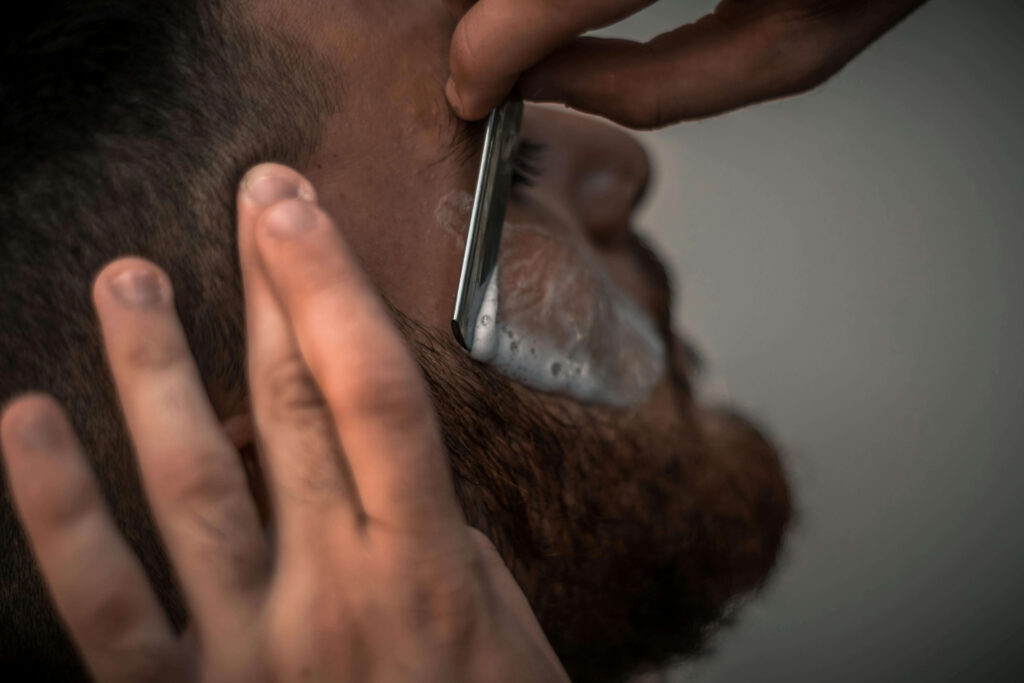
Hair Growth Inhibitors: An Innovative Hair Removal Method
While traditional methods served as stalwarts in the pursuit of smooth skin in the past, an innovative approach emerged that addresses the limitations posed by these time-honored practices. This modern alternative seeks to revolutionize the way we remove undesired hair.
Hair growth inhibitors target the roots of regrowth, promising a more sustainable, convenient, and effective approach to lasting smoothness. Hair growth inhibitors don’t just address existing hair; they actively hinder its future regrowth. Let’s dive into the science behind these inhibitors and explore their potential for achieving smoother, hair-free skin.
Hair Growth Cycle
While the goal may be to limit hair growth, losing hair or its thickness isn’t the solution most people seek. Grasping the intricacies of the hair growth cycle is pivotal for mastering the art of effective hair management.
The cycle consists of the following three phases:
- The Growth Phase (Anagen) – The active growth period of a hair follicle where cells in the root of the hair divide rapidly, leading to new hair formation
- The Transitional Phase (Catagen) – This brief phase signals the end of active hair growth when the hair follicle shrinks and detaches from the structure that nourishes it.
- The Resting Phase (Telogen) – This is the dormant phase where the hair is no longer growing actively; the process when the follicle re-enters the anagen phase is known as shedding.
Each strand of hair undergoes these phases independently, influencing the rate and thickness of hair growth. Implementing successful, targeted strategies to address specific stages requires understanding this cyclical process.
How Hair Growth Inhibitors Work
Hair growth inhibitors disrupt the enzymatic processes crucial for hair development on a molecular level. They target enzymes involved in synthesizing structural components necessary for robust hair growth and inhibit them. The inhibitors impede the natural progression of hair, reducing thickness and overall regrowth.
Unlike traditional hair removal methods, which focus on removing existing hair, these game-changing products extend their impact beyond the visible surface. Hair growth inhibitors slow down the regrowth stage of the hair cycle by prolonging the telogen phase and delaying the onset of the anagen phase for a more extended period of hair-free skin.
Lifestyle Choices for Optimal Hair Health
Men and women can empower themselves to cultivate an environment conducive to optimal hair health and management by considering the impact of lifestyle choices on the hair growth cycle.
The Role of Nutrition in Promoting or Inhibiting Hair Growth
Nutrition is the cornerstone for overall well-being, so it’s no surprise that its impact extends to the health of our hair. A diet rich in vegetables, fruits, whole grains, and lean proteins fosters an environment conducive to vibrant hair.
Essential nutrients like vitamins A, B, C, and E and minerals like zinc and iron also promote healthy hair growth. Conversely, thinning hair and hair loss can be attributed to nutrient deficiencies.
The Impact of Stress on Hair Health
The connection between stress and hair health is a well-established phenomenon. Chronic stress may contribute to conditions like alopecia areata, while elevated stress levels can trigger hormonal imbalances, causing hair to enter the resting phase and shed excessively prematurely.
As a result, managing stress becomes essential for maintaining optimal hair health. Focus on minimizing or reducing stress through relaxation techniques, mindfulness, and adequate self-care.
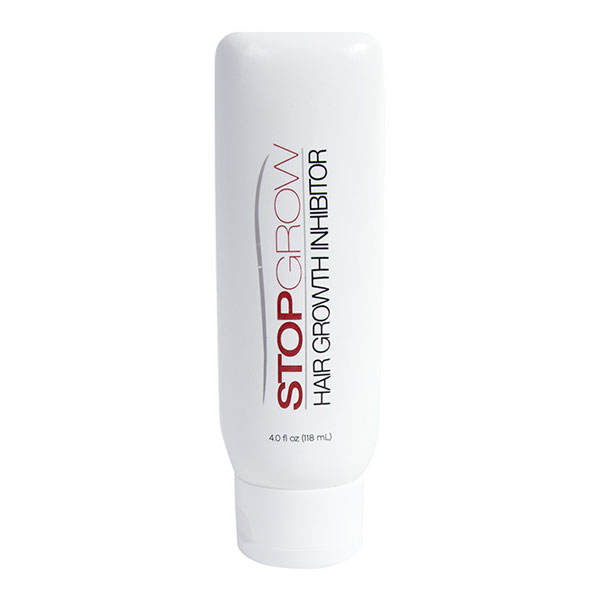
Unleash Your Confidence – Embrace Your Hair Removal Journey
In the ever-evolving quest for smooth, hair-free skin, explore, experiment, and relish the liberation of choice – whether you opt for traditional methods or embark on the innovative path of hair growth inhibitors like Stop Grow Hair Growth Inhibitor. This revolutionary product offers enduring smoothness and a gentler approach.
Empowerment lies in embracing personal grooming choices that resonate with your unique style. Allow your personal comfort to guide your hair removal journey and transcend societal expectations.
Seize the opportunity to experience radiant, smooth skin and unleash your confidence.